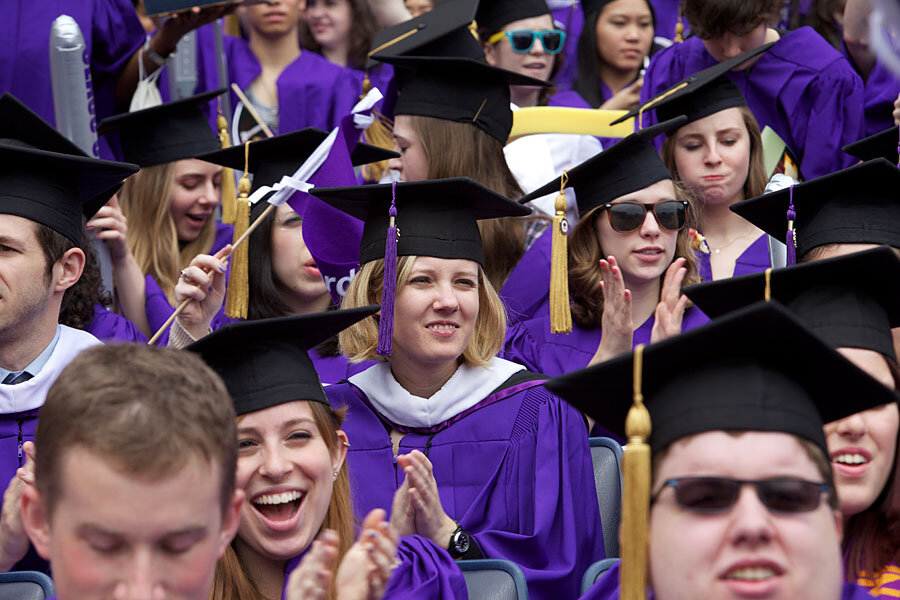Why is your face unique? New study offers clues.
Loading...
Why is each human face unique? It's a question a child might ask.
The tempting response for a harried parent is, "Just because." After all, no two products of nature, be they clouds, snowflakes, or fingerprints, are exact duplicates. Mother Nature is no Henry Ford; those variations in shape, color, and texture are just part of the production process.
This response sounds reasonable, but new research suggests that things might not be so simple.
In a study published this past week in the scientific journal Nature Communications, Berkeley biologists Michael J. Sheehan and Michael Nachtman found that the differences in our facial traits, such as the shape of our noses and the distance between our eyes, are just too big to explained purely by chance.
Instead, the authors hypothesize, there are evolutionary forces actively molding each of our faces so that they stand out from the crowd. Your face, they say, is what biologists call a signal, a mechanism that, like the shimmering tail of a peacock or the Day-Glo skin of a poison frog, sends a message to other organisms about who you are.
But how could one possibly test this hypothesis? Dr. Sheehan reasoned that if our unique facial traits are indeed a signal, then there should be greater variation among human faces than among other human body parts.
And that's exactly what Sheehan and Dr. Nachtman found when they examined data from the US Army Anthropometric Survey. Conducted in 1988 with the aim of improving the design of military clothing and equipment, ANSUR, as the study is known, gathered detailed body measurements of thousands of soldiers, including the distance of the tip of the nose to the back of the head, the circumference of the elbows, and the width of the feet.
The ANSUR data showed that facial traits, such as the distance between the eyes and the height of the ears are, on average, more variable than other body traits such as the length of the forearm and the height of the waist. What's more, facial traits tend to be independent of other facial traits while other body measurements tend to correlate. Put another way, people with long arms tend to have long legs, but people with, say, widely spaced eyes are not particularly prone to having wide noses.
A look at the DNA tells the same story. Using data collected by the 1000 Genomes project, a comprehensive database on human genetic variation, the researchers found that parts of the human genome thought to determine the shape of the face displayed more variability than regions that determine other morphological traits.
"All three predictions were met: facial traits are more variable and less correlated than other traits, and the genes that underlie them show higher levels of variation," Nachman said in a news release. "Lots of regions of the genome contribute to facial features, so you would expect the genetic variation to be subtle, and it is. But it is consistent and statistically significant."
"I was surprised that it worked," Sheehan, a postdoctoral researcher at UC Berkeley’s Museum of Vertebrate Zoology, told the Monitor. "The more complex a trait is, the harder it is to find patterns."
The pair also compared these genomes with those of two types of ancient humans – Neanderthals and Denisovans. They found similar variation in regions associated with facial traits, suggesting that this kind of facial uniqueness dates at least as far back as our common ancestor.
Sheehan previously studied paper wasps, animals that, like humans, have evolved highly variable faces for themselves. He believes that, for certain social species, being uniquely identifiable has its evolutionary advantages when it comes to mating, aggression, and parental care.
"Other species that have a lot more fluid social structures," says Sheehan. "Identity is not as important to them." But in humans "even a very small cost of confusion is enough to generate a lot of diversity."
Sheehan and Nachtman say that our one-of-a-kind faces suggest that human social complexity, often credited as helping give rise to intricate processes inside our skulls involving language, attention, memory, and reasoning, also leaves prominent marks on the outside.
"It's not just our intelligence and cognitive abilities that have evolved," says Sheehan. "Being in complex social systems has continued to shape our morphology."








